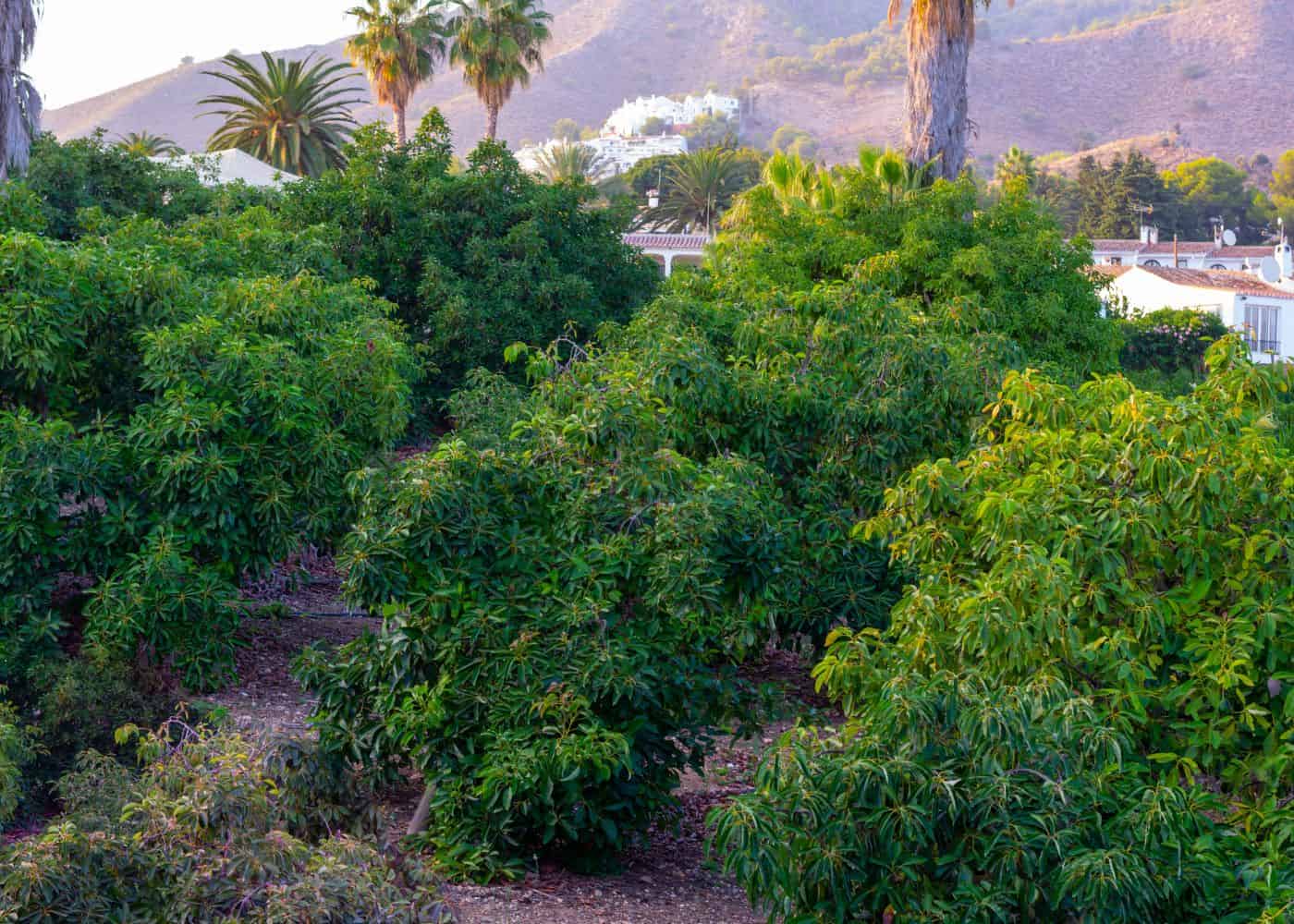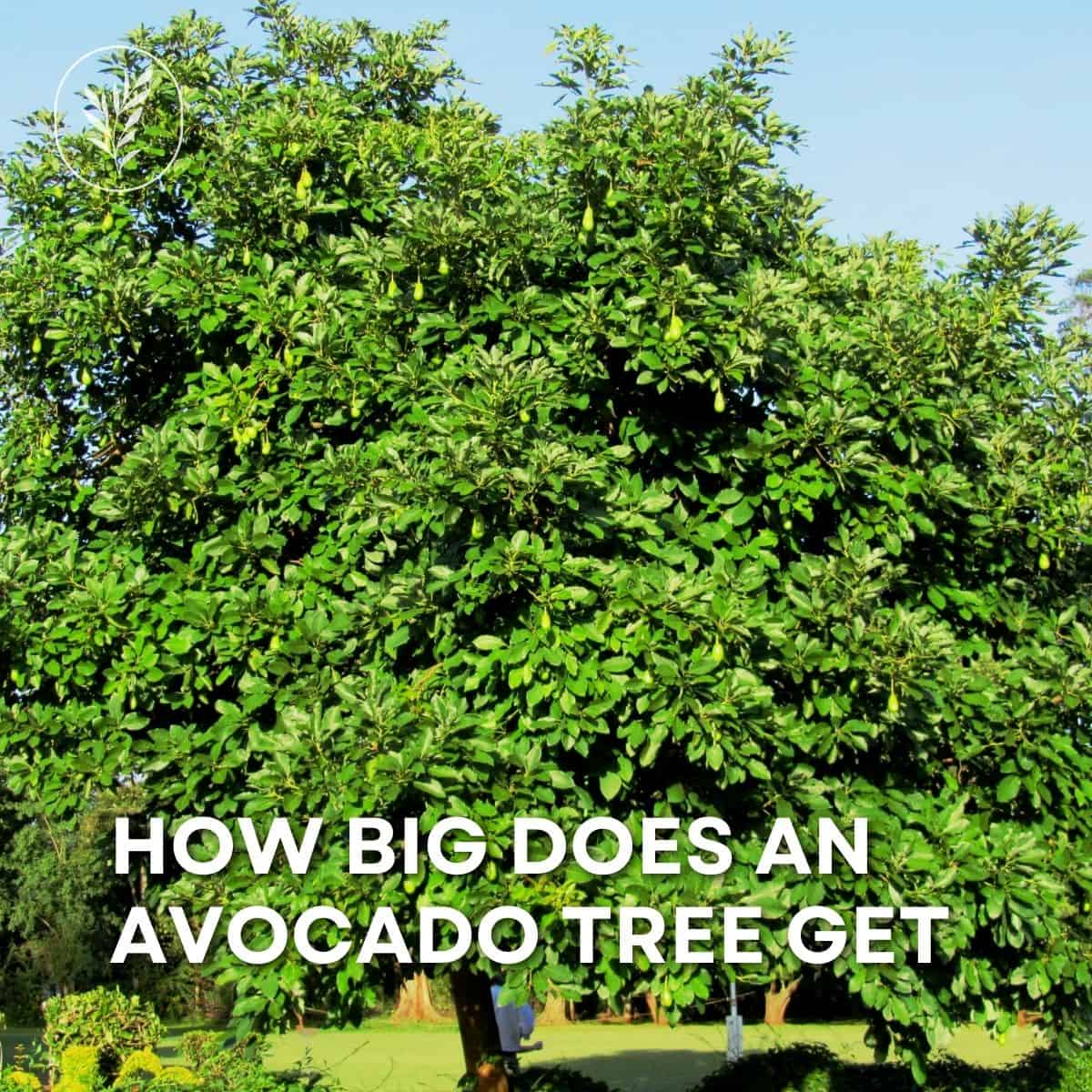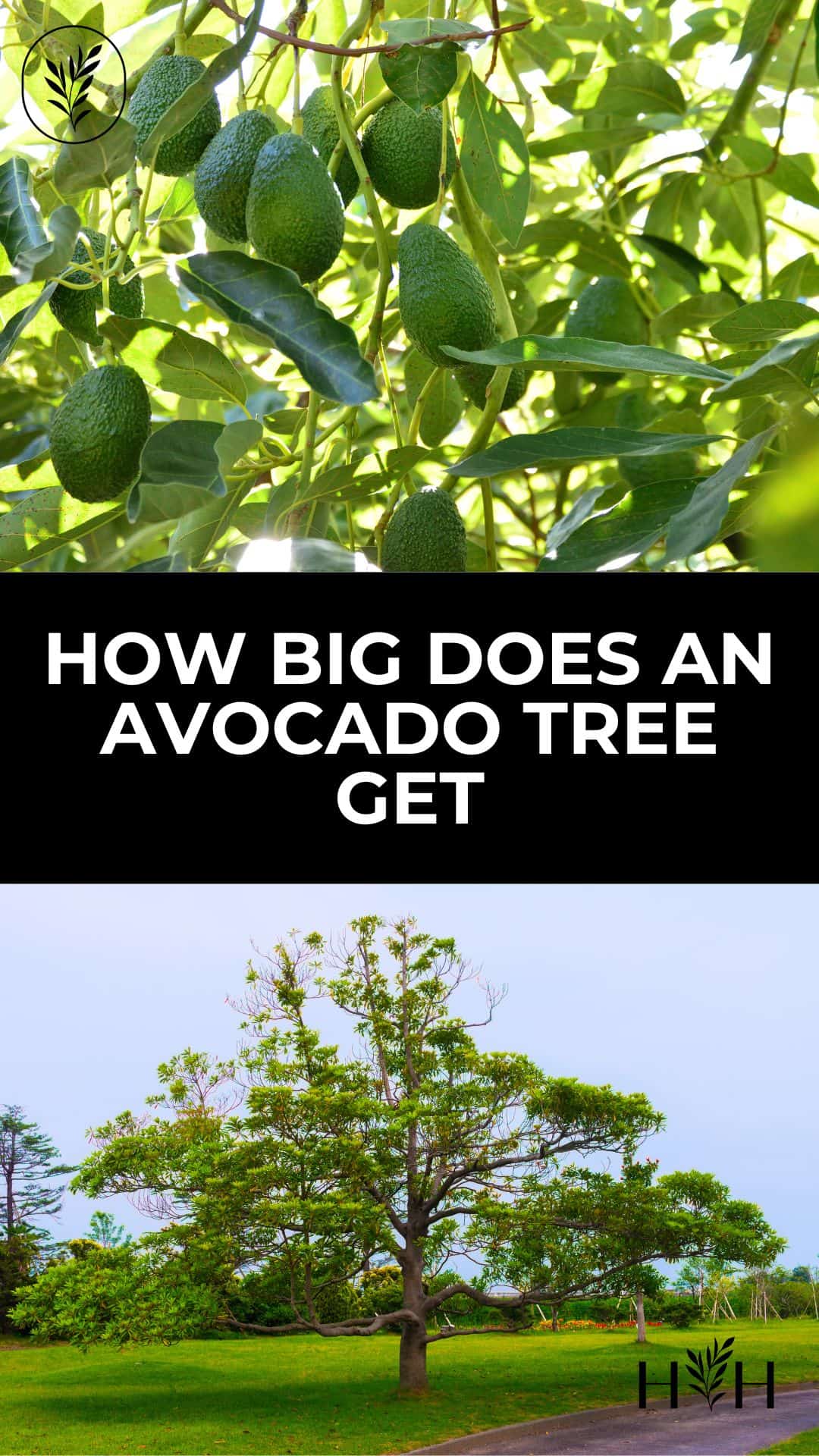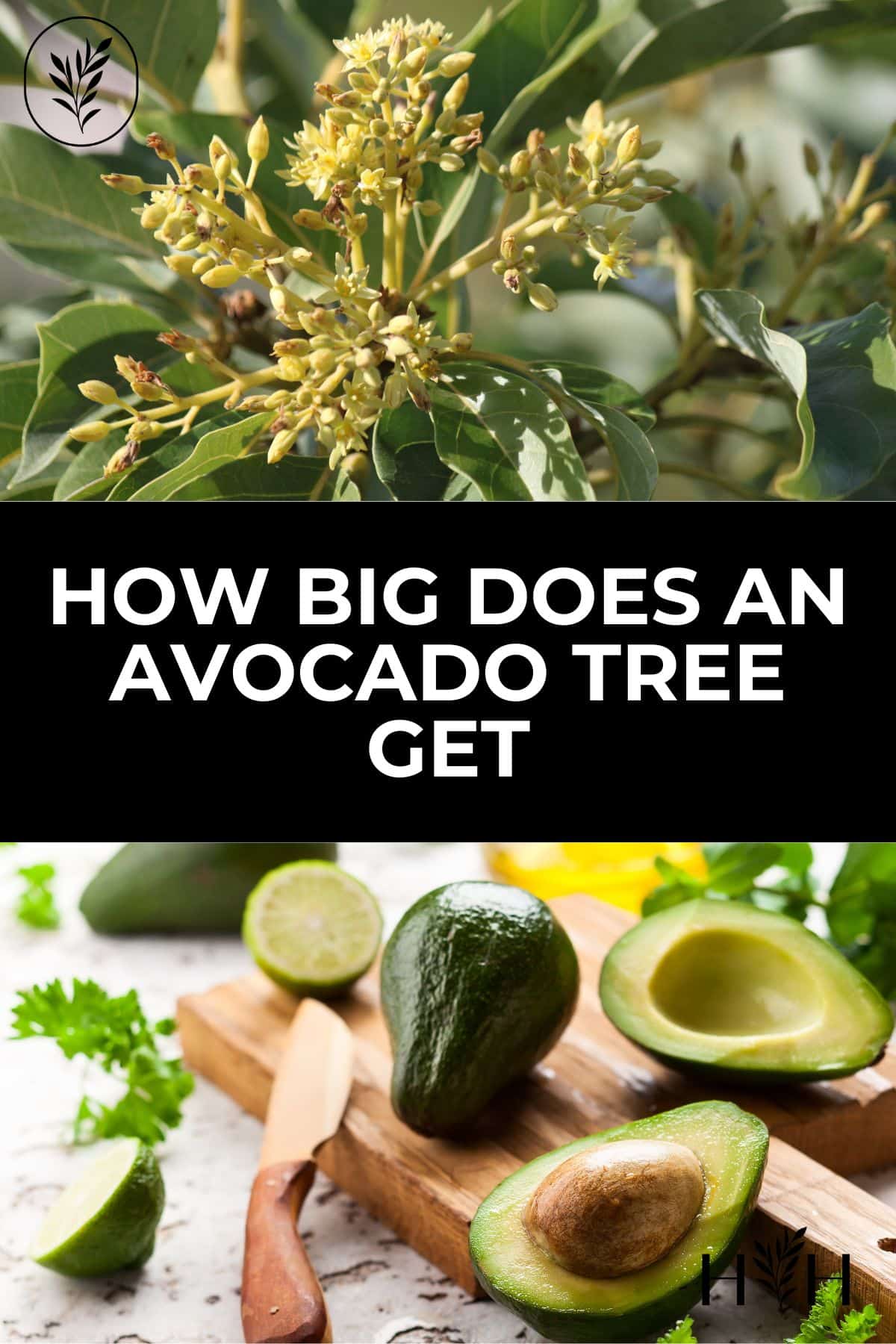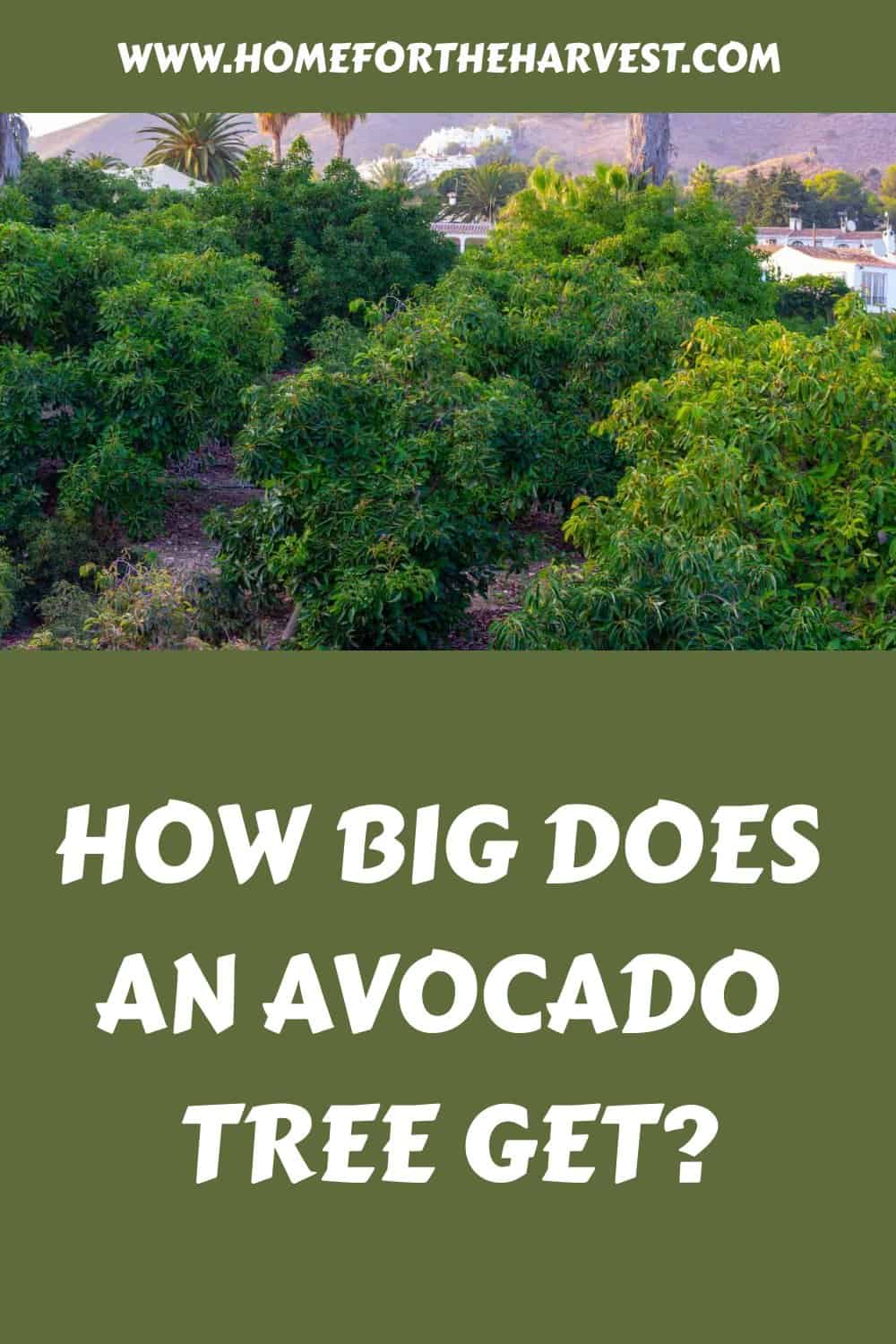Are you curious about how big an avocado tree can get? Have you ever been surprised by the size of a fully-grown avocado tree in someone’s backyard or at your local park? If so, then it is time to learn more about this incredible fruit-bearing plant. We will be discussing the growth rate, soil requirements, watering needs, and fertilizing for an avocado tree. So let’s dive into understanding just how big does an avocado tree get.
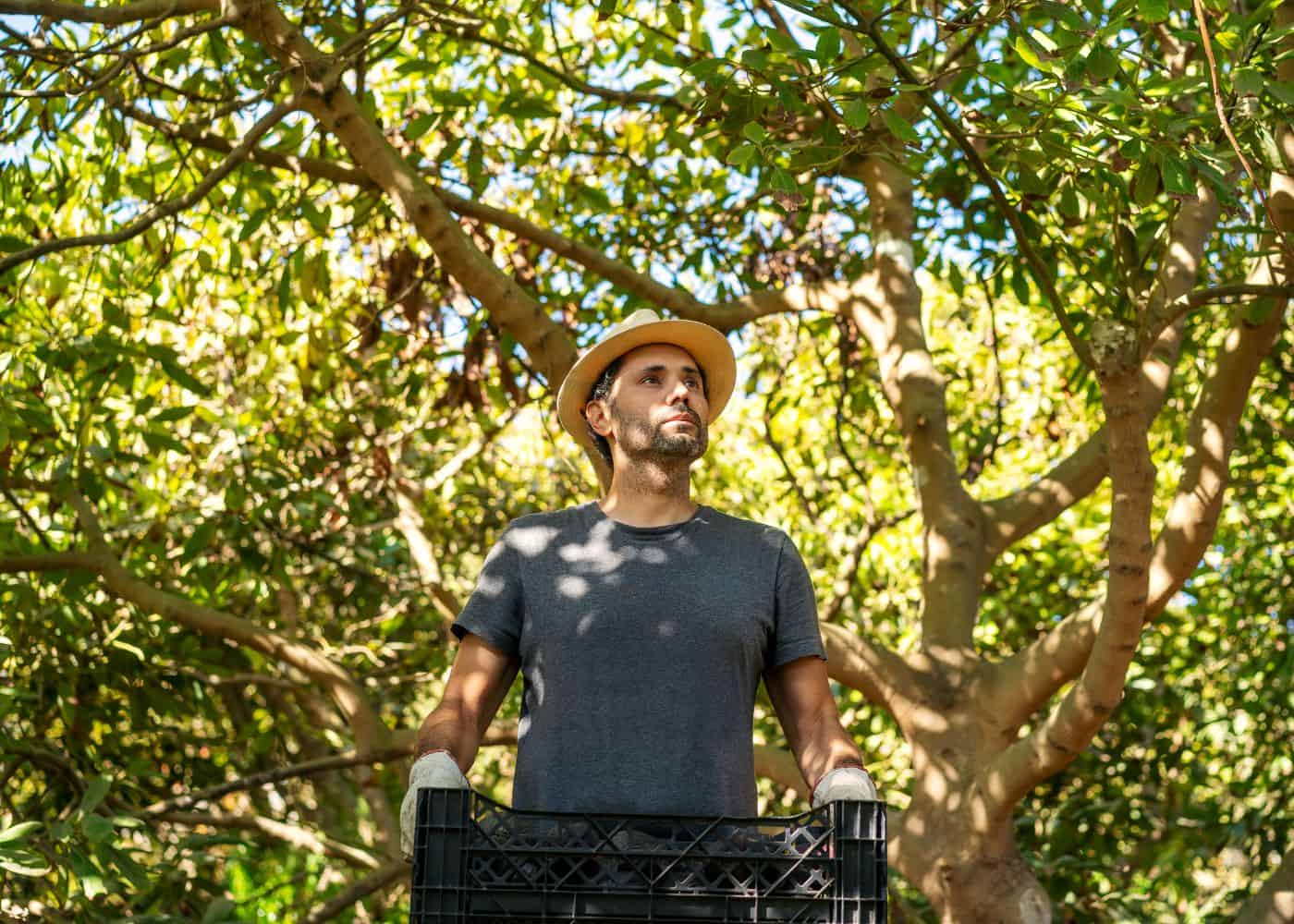
How big does an avocado tree get?
Avocado trees are a popular choice for many home gardeners. But before you decide to plant one, it’s important to know how big they can get. Avocado trees typically reach heights of 15-30 feet or more and have a spread of 10-20 feet when mature. However, some varieties may grow taller or wider than this range depending on the climate and soil conditions in which they are planted.
The growth rate of an avocado tree depends largely on its environment and care regimen. Trees grown in optimal conditions with regular watering and fertilization will generally grow faster than those that don’t receive as much attention or are exposed to harsher climates such as extreme heat or cold temperatures. Generally speaking, most avocado trees take about 3 years from planting until they begin producing fruit, but some varieties may take up to 5 years before bearing fruit.
Avocado trees require well-draining soil with a pH between 6 and 7 for optimal growth and fruiting potential. If your soil is too acidic (below 6) or alkaline (above 7), consider amending it prior to planting your tree so that it has the best chance at success. Additionally, avocados prefer soils rich in organic matter like composted manure; adding this type of material into the top few inches of soil around your tree can help promote healthy root development over time.
An avocado tree can grow to a height of over 80 feet, making it one of the tallest trees in its family. However, depending on its environment and care, an avocado tree’s growth rate will vary greatly. Let’s take a closer look at what affects an avocado tree’s growth rate.
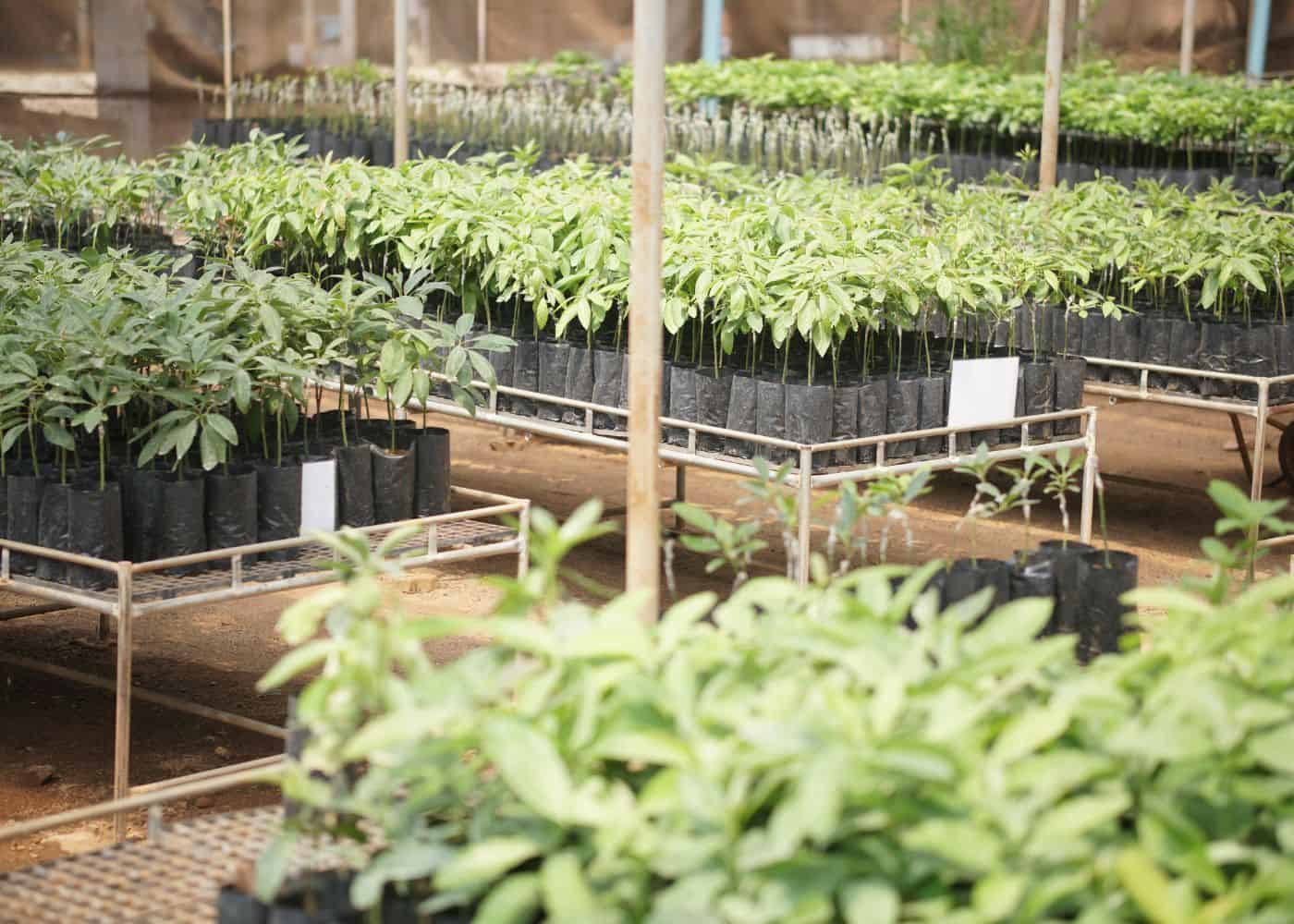
Growth rate
Avocado trees grow at a moderate to fast rate. They typically reach heights of up to 30 feet and widths of up to 25 feet. In the right conditions, they can reach their full height within 5-10 years. Once the trees have reached their mature height, the trees put more energy into branching out and into blossoming to produce fruit.
While some varieties may take longer or shorter depending on climate and other factors, it is important to remember that avocado trees will continue growing throughout their lives if given the right care and attention.
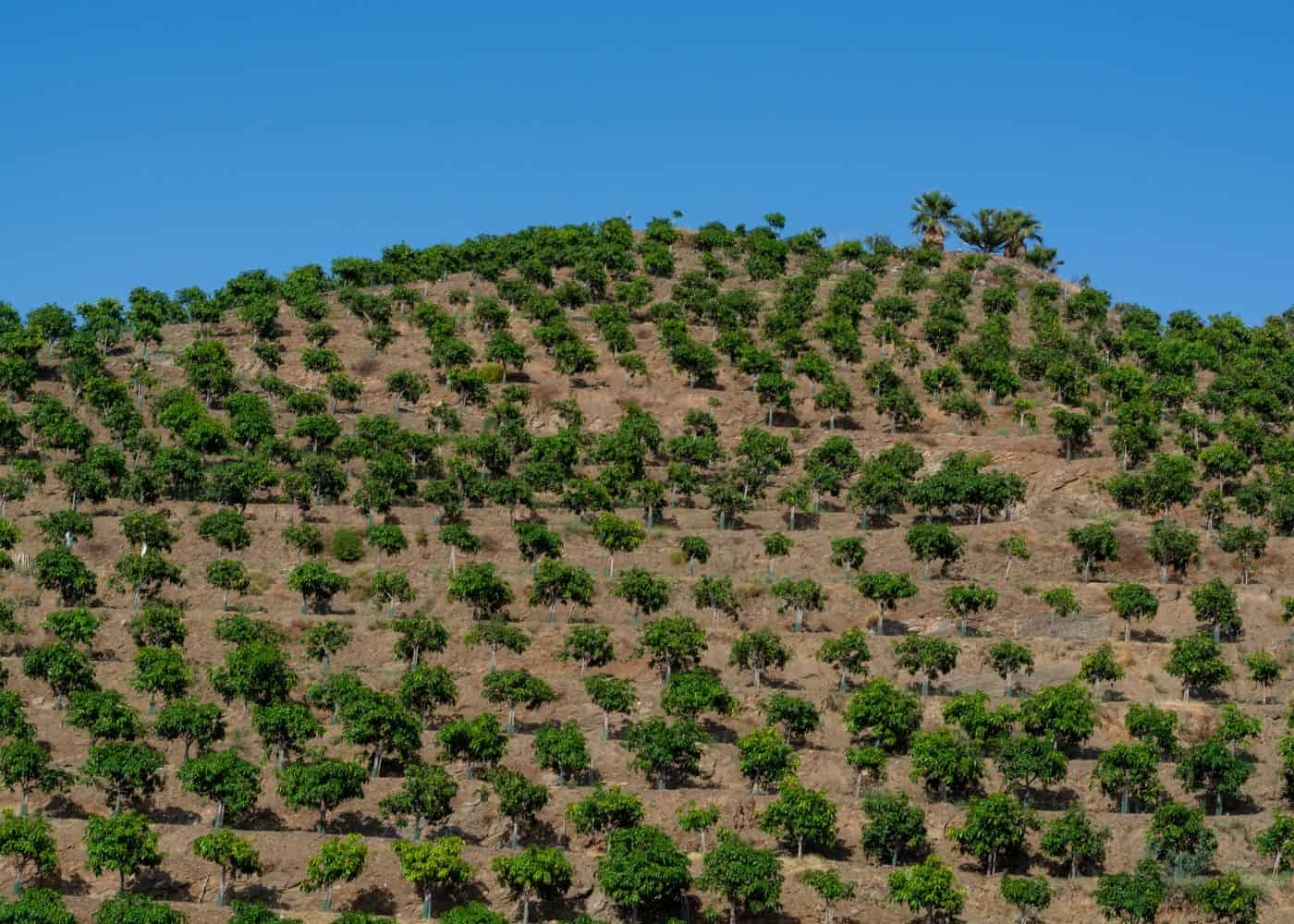
Pruning avocado trees
Pruning is an important part of keeping your avocado tree healthy and under control. It’s best done when the tree is young so you don’t have too much work later on down the line. Pruning avocados helps keep your tree from becoming too large as well as controlling its shape so it looks nice in your garden space. If you want a smaller tree than what would naturally occur with growth rate alone then pruning regularly will help achieve this goal without sacrificing the quality or health of the plant itself.
In order for an avocado tree to thrive it needs soil with good drainage capabilities as well as plenty of organic matter such as composted manure or mulch added into it every year or two (depending on the climate). The pH level should be between 6-7 which is slightly acidic but not overly so – adding lime can help raise this number if needed over time but make sure not to add too much all at once. Additionally, avocados need plenty of water during hot months but also require periods where they are allowed to dry out completely before being watered again; otherwise, root rot could become an issue quickly due to overwatering.
Once you understand the growth rate of an avocado tree, it’s time to look at the soil requirements for optimal health and fruit production.
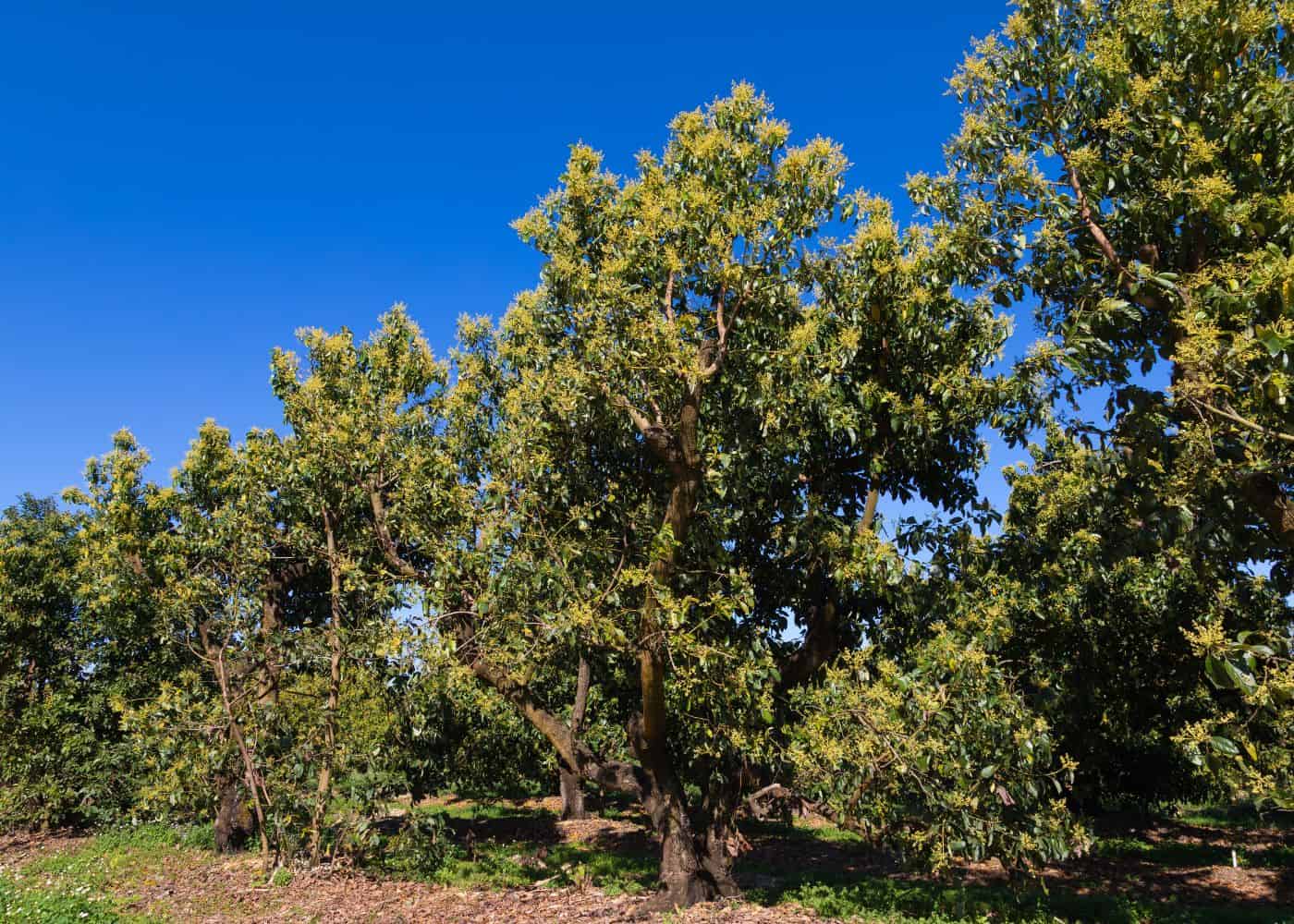
Soil requirements
Avocado trees need well-draining soil to thrive. The ideal pH for avocado tree growth is between 6 and 7.5, but it can tolerate a slightly higher or lower range as long as the soil isn’t too acidic or alkaline. To ensure your avocado tree has all the nutrients it needs, add organic matter such as compost or manure to the soil at least once a year. This will help improve drainage and provide essential nutrients for healthy growth.
When planting an avocado tree in your garden, make sure you use a quality potting mix that contains perlite or vermiculite to help with drainage and aeration of the roots. If you are planting directly into the ground, consider adding some sand to improve drainage if necessary. It’s also important to keep weeds away from your avocado tree since they can compete with it for water and nutrients in the soil.
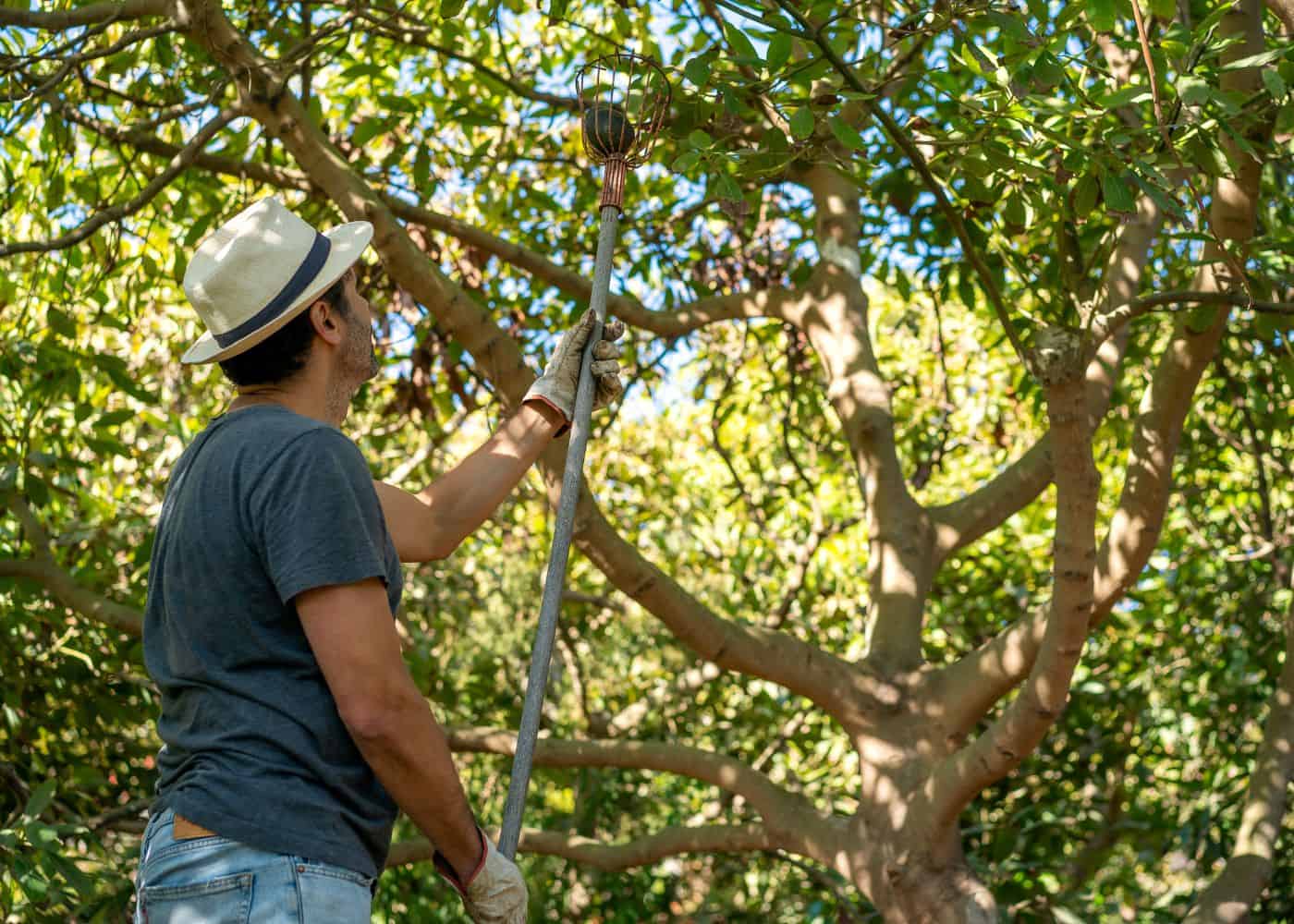
It’s best not to over-fertilize an avocado tree because too much nitrogen can cause excessive leaf growth at the expense of fruit production; however, applying fertilizer regularly during spring and summer months will encourage healthy root development and abundant fruit production later on in life. Be sure to follow instructions on any fertilizer product carefully before using them around your plants so you don’t end up doing more harm than good.
If you live in an area where there is frequent rainfall throughout the winter months, be sure to mulch around your avocado tree each autumn season. This helps retain moisture while preventing weed growth near its base which could otherwise rob vital resources from its roots. Additionally, if temperatures drop below freezing point during wintertime then consider covering young trees with burlap sacks overnight until temperatures rise again; this should protect them from frost damage that could otherwise kill off their delicate leaves.
With the right soil requirements in place, you can ensure your avocado tree has the best foundation to grow and thrive; now let’s look at how much water it needs.
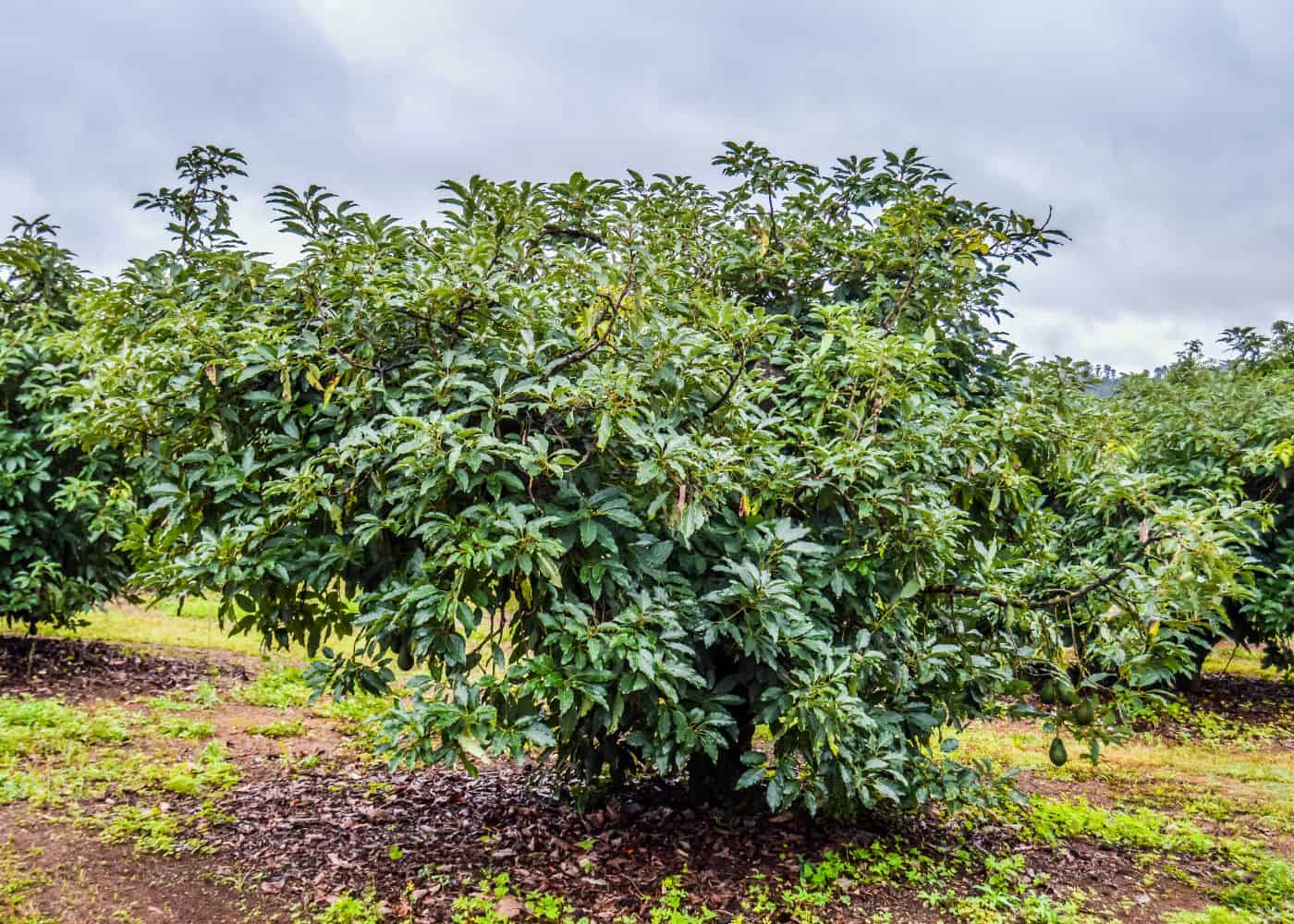
Watering needs
Avocado trees need regular watering to stay healthy and produce fruit. Watering deeply once or twice a week in the summer months is ideal, while less frequent watering is needed during winter when the tree is dormant. It’s important not to overwater as this can lead to root rot and other problems.
When deciding how much water your avocado tree needs, consider its size and age. Young trees should be watered more frequently than mature ones since they have smaller root systems that require more moisture for growth. For young trees, it’s best to give them an inch of water per week during the growing season and half an inch during dormancy periods. For mature trees, one-half inch of water per week in the summer months will suffice with no additional irrigation required in winter unless there are extended dry spells or extreme temperatures that could cause stress on the plant.
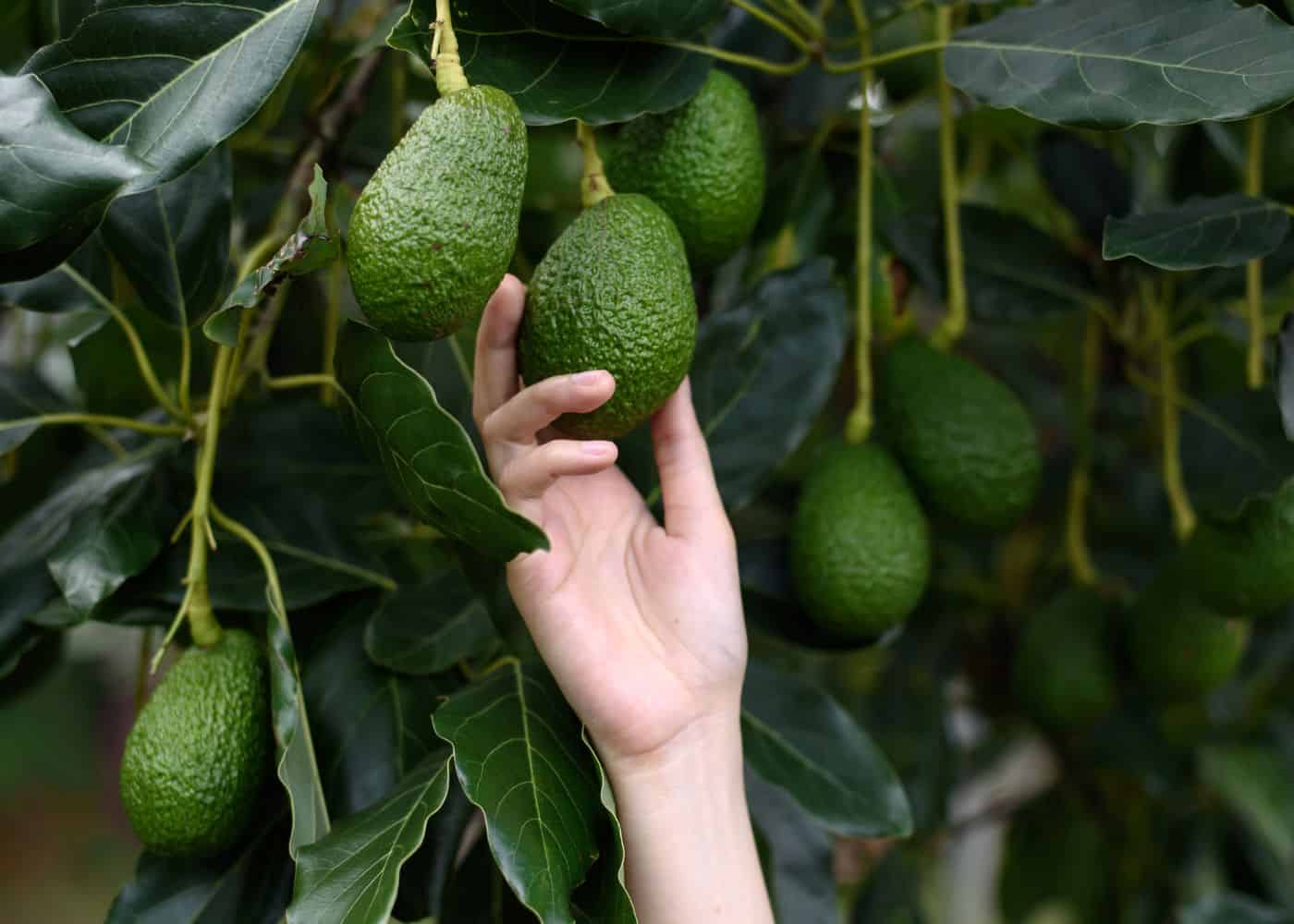
It’s also important to pay attention to soil conditions before you start irrigating your avocado tree; if it feels damp below two inches deep then wait until it dries out before adding any more water as over-watering can be just as damaging as under-watering. Additionally, make sure you use a soaker hose rather than sprinklers which tend to spread too much water around unevenly leading to fungal diseases like leaf spot or stem blight which can affect both leaves and fruits of your avocado tree negatively impacting yields significantly.
Finally, mulching around your avocado tree helps retain moisture in hot weather but make sure you don’t pile up too much mulch against the trunk itself; this could encourage pests such as rodents who may gnaw away at bark causing damage over time. A layer of organic matter about three inches thick should do just fine – enough for retaining moisture without creating a home for unwanted critters.
Watering an avocado tree is key to its health and growth; however, fertilizing the soil can help ensure that your tree gets all the nutrients it needs for optimal growth.
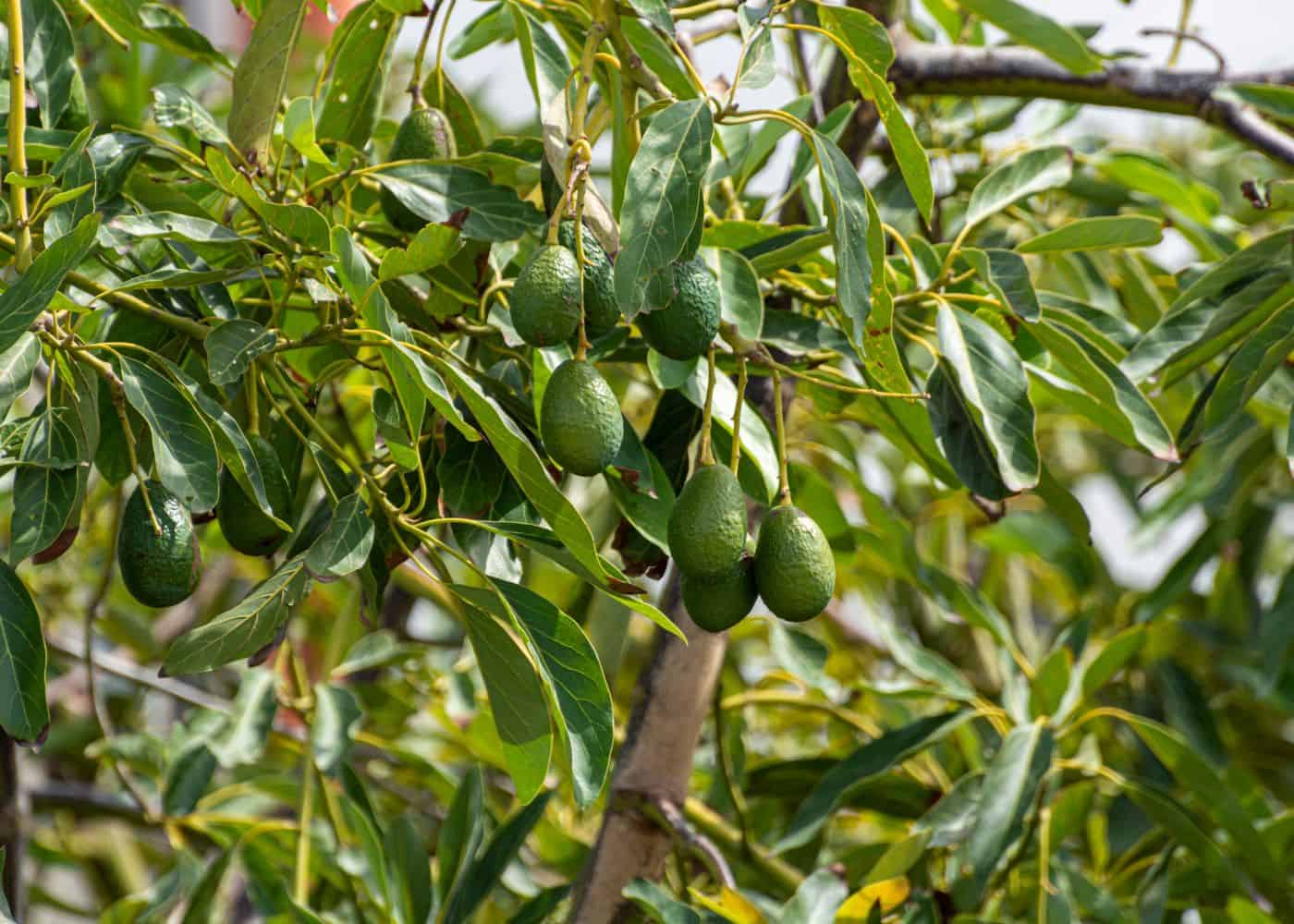
Fertilizing avocado trees
Fertilizing your avocado tree is an important part of keeping it healthy and productive. A balanced fertilizer that contains nitrogen, phosphorus, and potassium in similar amounts should be applied every three months. It’s best to avoid fertilizers that are high in nitrogen as this can cause excessive leaf growth at the expense of fruit production.
When applying fertilizer to your avocado tree, make sure you spread it evenly around the base of the trunk but not too close or you may burn the roots. If possible, use a slow-release fertilizer so that it will last longer and provide more consistent nutrition for your tree over time. Be careful not to apply too much fertilizer as this can also lead to burning or other damage to your tree’s roots.
It’s also important to water regularly after fertilizing so that the nutrients have a chance to reach down into the soil where they are needed most by your avocado tree’s root system. Watering helps dissolve any salts from chemical fertilizers which could otherwise build up in soil over time and become toxic for plants if left unchecked. Additionally, regular watering helps ensure even distribution of nutrients throughout the entire root zone area where they can be taken up by plant roots as needed for optimal health and productivity of your avocado tree.
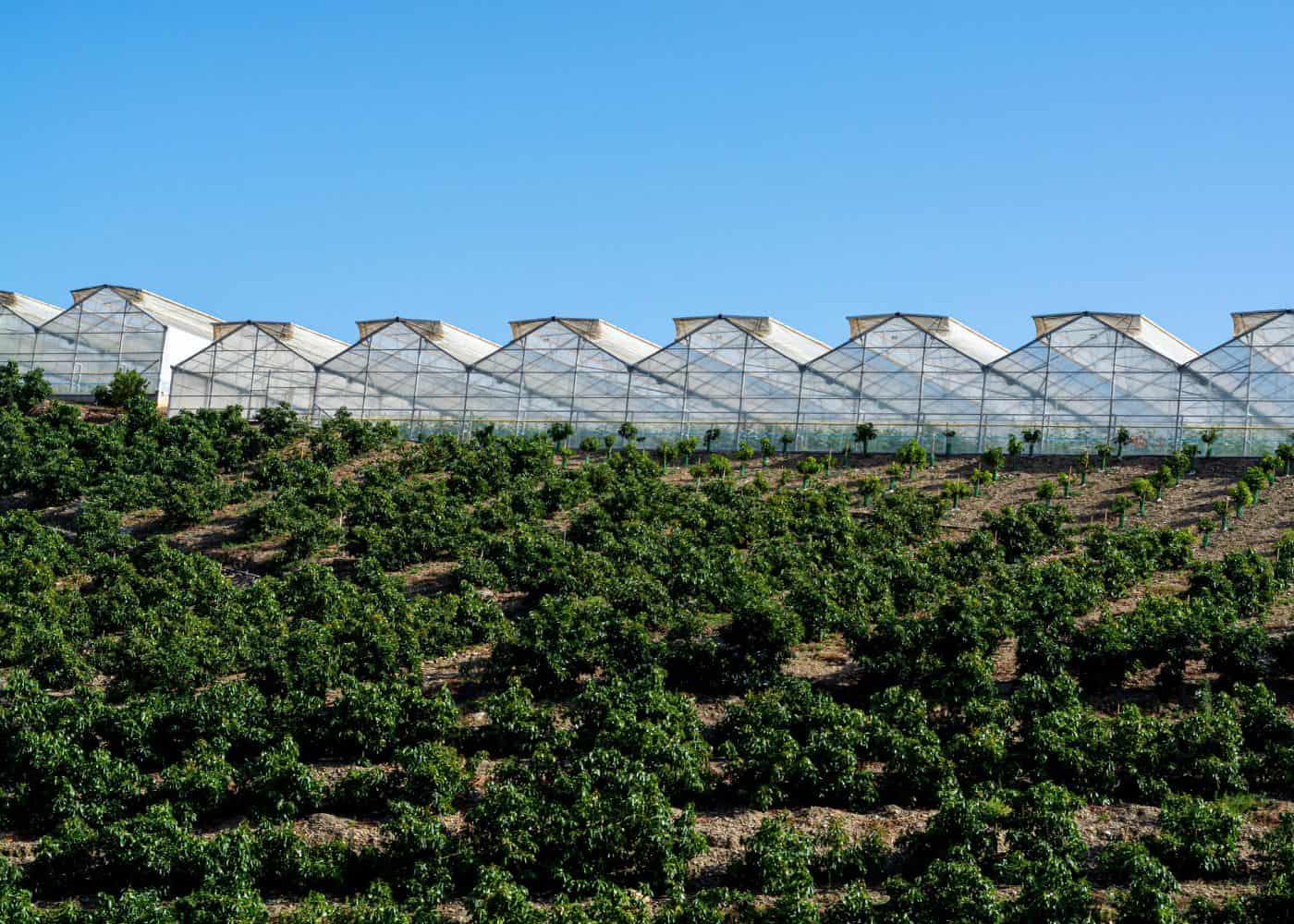
FAQs about how big an avocado tree gets
Can you keep an avocado tree small?
Yes, it is possible to keep an avocado tree small. By pruning the branches and roots regularly, you can maintain a smaller size for your tree. Additionally, by selecting dwarf varieties of avocados or growing them in containers, you can further limit their growth potential. With proper care and maintenance, your avocado tree will remain healthy and compact while providing delicious fruit.
How long does it take for an avocado tree to fruit?
It typically takes an avocado tree between 3 to 5 years to produce fruit. However, this timeline can vary depending on the variety of the tree and environmental conditions. In ideal conditions, some varieties may start producing fruit as early as 18 months after planting while others may take up to 8 years or more. Proper care is essential for optimal growth and fruiting; regular watering, fertilizing, pruning, and pest control are all important factors in helping your avocado tree reach its full potential.
Do you need 2 avocado trees to produce fruit?
No, you do not need two avocado trees to produce fruit. One tree can be enough for a small harvest. However, having two trees will increase the chances of pollination and therefore improve your yield. If you have space in your garden, it is recommended to plant at least two avocado trees as they are self-pollinating plants that benefit from cross-pollination with another tree of the same variety.
How much space do avocado trees need?
Avocado trees require a lot of space to grow and thrive. They need at least 10 feet between each tree, with 15-20 feet being even better. The roots can spread out up to 25 feet in diameter, so it’s important to give them plenty of room for healthy growth. Additionally, they should be planted in well-draining soil that is rich in organic matter and receives full sun exposure throughout the day. With proper care and maintenance, avocado trees can provide delicious fruit for many years.
Conclusion
The avocado tree is a great addition to any garden, and it can grow quite large. With the right soil, watering needs, and fertilizing schedule, you can have an impressive-looking avocado tree in your yard that will be the envy of all your neighbors. So if you’re wondering how big does an avocado tree get? The answer is that with proper care it can reach heights of up to 40 feet or more.
Resources
- Tips for growing avocado trees indoors
- Everything you need to know about planting avocado trees
- How to fertilize an avocado tree
- How to prune an avocado tree
- When to graft avocado trees
References
- Jukes, J. (2017). How to Grow Your Avocado. CreateSpace Independent Publishing Platform.
- Schaffer, B. A., Wolstenholme, B. N., & Whiley, A. W. (2013). The Avocado: Botany, Production and Uses (pp. 61-63). CABI.
- How to Grow Your Own Avocado Tree from the Seed
- Reich, L. (2012). Grow Fruit Naturally: A Hands-on Guide to Luscious, Home-grown Fruit (pp. 86-89). Taunton Press.
Need more info?
Are you interested in learning more about how big does an avocado tree get? Here are our best articles about it!


